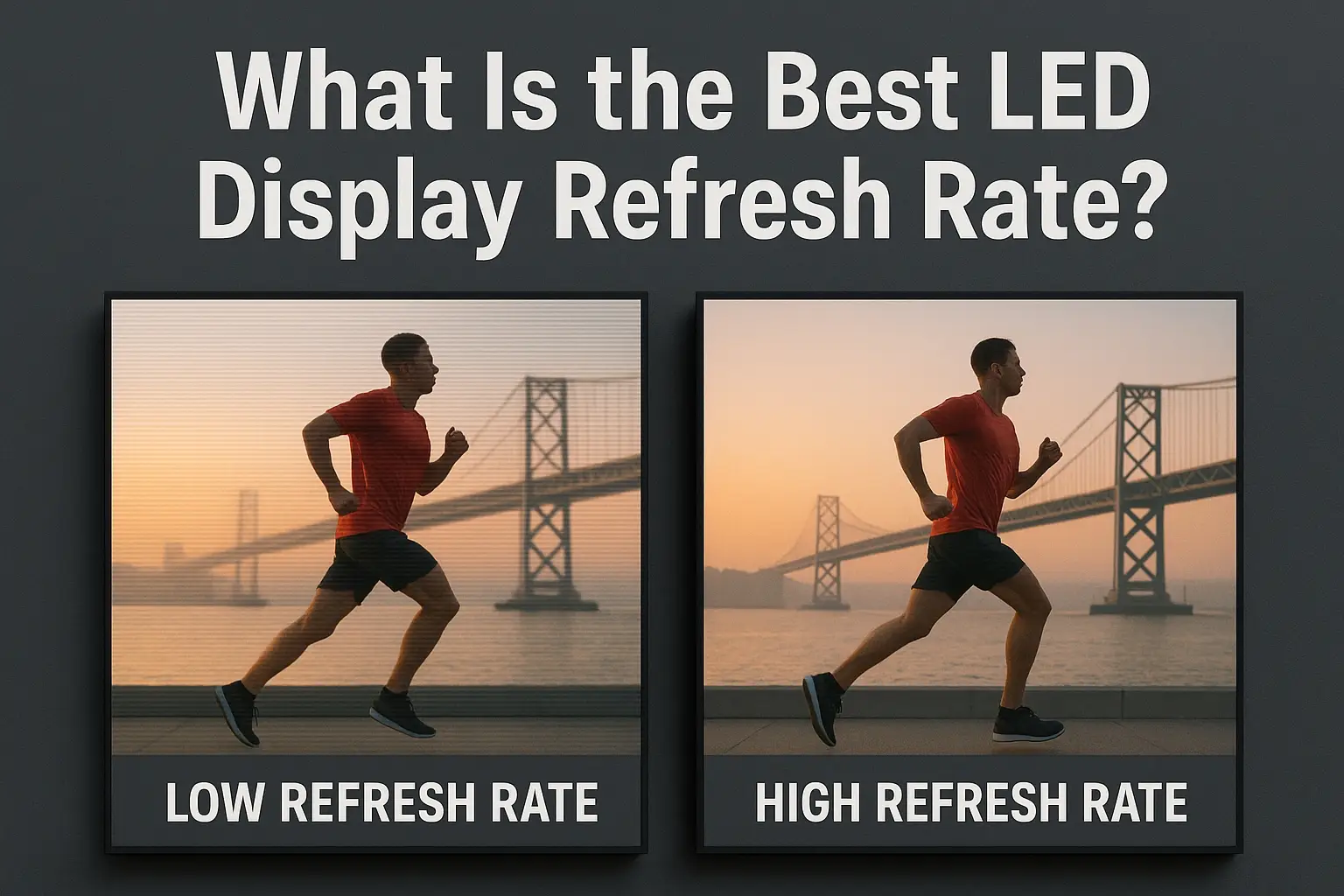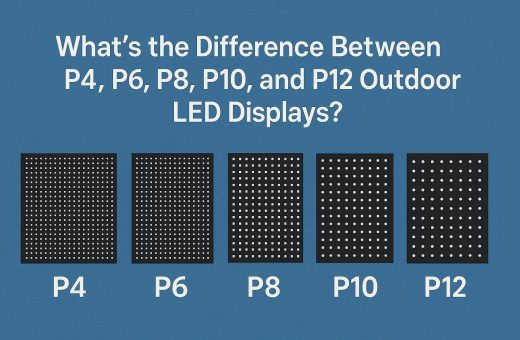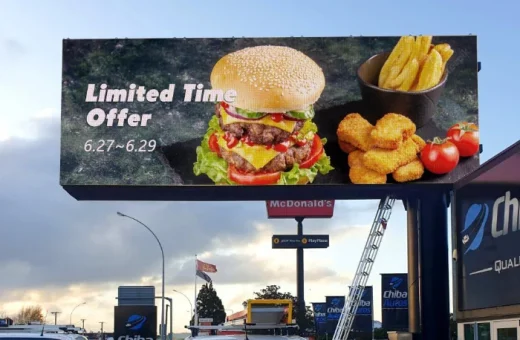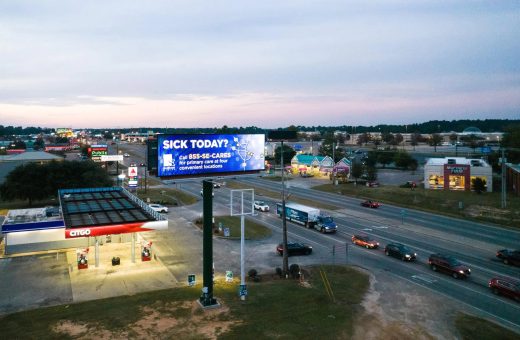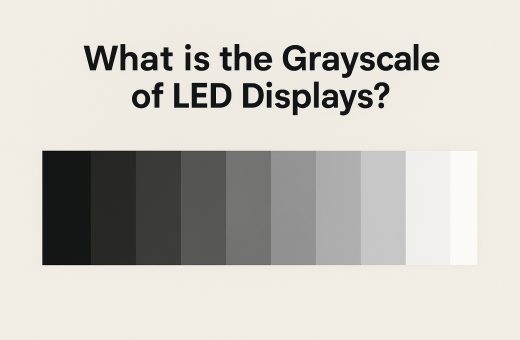Table of Contents
The LED display refresh rate directly impacts how smooth the content appears, how comfortable it is for viewers, and how professional the display looks in both real-life and on-camera recordings.
The real question is: what is the best LED display refresh rate, considering the different application scenarios? Generally, a refresh rate of 3840 Hz works well across many uses, but there is still more to explore.
As an experienced LED display manufacturer, Chainzone will explain what the LED refresh rate means, typical ranges, the pros and cons of different options, and how to choose the best fit for your needs in this article!
What Is the LED Display Refresh Rate?
The refresh rate of an LED display refers to the number of times per second that the screen updates its image. It’s measured in hertz (Hz). For instance, a 960Hz refresh rate means the display refreshed 960 times per second.
This fast refresh is what makes motion appear smooth. It works much like a flipbook—the quicker you turn the pages, the smoother the animation looks.
For the human eye, a refresh rate above 60Hz is often indistinguishable, but that’s not the whole story. While our eyes might not see the flicker, cameras and other video equipment are highly sensitive to it.
A low refresh rate can cause unsightly black bands or moiré patterns to appear when a screen is filmed, which is a significant issue for live events, TV studios, and any application where the display will be captured on video.
Typical Refresh Rate Ranges and Applications
LED displays come with different refresh rate options depending on the technology used:
- 960Hz: Considered an entry-level refresh rate, usually found in basic rental or indoor displays where budget is the primary concern.
- 1920Hz: A widely used standard refresh rate for general commercial applications. It delivers decent performance for static content and moderate motion.
- 3840Hz: Often chosen for professional environments like TV studios, sports stadiums, and high-end advertising displays. It ensures smooth, flicker-free visuals that look great to the human eye and on camera.
- 7680Hz and Higher: The top-tier refresh rate designed for premium applications such as large-scale events, concerts, and live broadcasting. It provides ultra-smooth performance, even under close scrutiny by high-definition cameras.
Pros and Cons of Low vs. High Refresh Rates
It’s widely understood that better performance usually means higher costs, but the trade-offs go beyond that.
1. Low Refresh Rates (e.g., <1920 Hz):
✅ Pros: Generally more budget-friendly. They consume less power and are sufficient for static or simple dynamic content where the display won’t be filmed or viewed from a very close distance.
❎ Cons: Can lead to visible flickering and motion blur, making fast-moving video appear choppy. The biggest drawback is the poor performance when filmed, resulting in artifacts like black bands or moiré patterns that ruin broadcast quality.
2. High Refresh Rates (e.g., >3840 Hz):
✅ Pros: Delivers incredibly smooth, fluid motion with no visible flicker. The visuals are stable and appear crisp, even when captured on a professional camera. This is crucial for broadcast quality and a premium viewer experience. High refresh rates also reduce eye strain for those viewing the screen for extended periods.
✅ Cons: Higher refresh rates come at a higher cost due to more advanced control systems and driver ICs. They may also consume more power, though modern technology is making this less of an issue.
How to Choose the Best LED Display Refresh Rate
Generally, there are 3 key factors for you to determine the best LED refresh rate for your project.
1. Viewing Distance Considerations
For outdoor displays viewed from a long distance (e.g., highway billboards), a 1920 Hz refresh rate is often sufficient. The human eye cannot perceive minor flicker at a great distance. However, for indoor displays in close-quarters settings like a retail store or a control room, a higher refresh rate of 3840 Hz is recommended for optimal visual comfort and quality.
2. Content Type and Motion Dynamics
What will you be displaying? If it’s mainly static text, a lower refresh rate may work. But if you plan to show high-speed videos, live sports, or a continuous feed of fast-moving graphics, a high refresh rate is essential to prevent motion blur and ensure a seamless viewing experience.
3. Budget and Technological Constraints
While a higher refresh rate is almost always better, it comes at a higher cost. Your budget will be a major deciding factor. However, it’s important to view the investment in a higher refresh rate as a way to “future-proof” your display and ensure it can handle a wider range of high-quality content without needing an upgrade down the line.
Ultimately, the best refresh rate for most professional applications today is at least 3840 Hz. It’s the standard for broadcast and live events, providing the perfect balance of exceptional performance and value.
Why Choose Chainzone for High-Refresh-Rate LED Displays
At Chainzone, we understand the importance of a high LED display refresh rate and what it means for your project’s success. That’s why we’ve engineered our products to deliver outstanding visual performance. We offer a wide range of LED displays with high refresh rates, including options that go up to 7680 Hz, to meet the most demanding professional requirements.
In addition to that, we understand the challenges of LED display applications and address them with our innovative LOB technology, which delivers high brightness while significantly reducing energy consumption. Here, you can have reliable commercial screens, broadcast-ready solutions, advanced large-scale event displays, and beyond.
Conclusion
The refresh rate of LED displays plays a vital role in overall image quality and viewing comfort. While lower refresh rates can be sufficient for budget-conscious projects, high refresh rates are the key to professional-grade performance, especially when it comes to video content and live broadcasting.
At Chainzone, we specialize in providing LED solutions that combine high refresh rates, durability, and cutting-edge technology. If you are interested in our offerings and services, you are more than welcome to click here to have tailored advice and solutions!

